How to Use the
Wysiwash Sanitizer-V
We spent years perfecting the Sanitizer-V’s design to create a safer, eco-friendly system for sanitizing large areas. Get up to speed with Wysiwash by watching our short video guide, or keep reading for our detailed instructions.
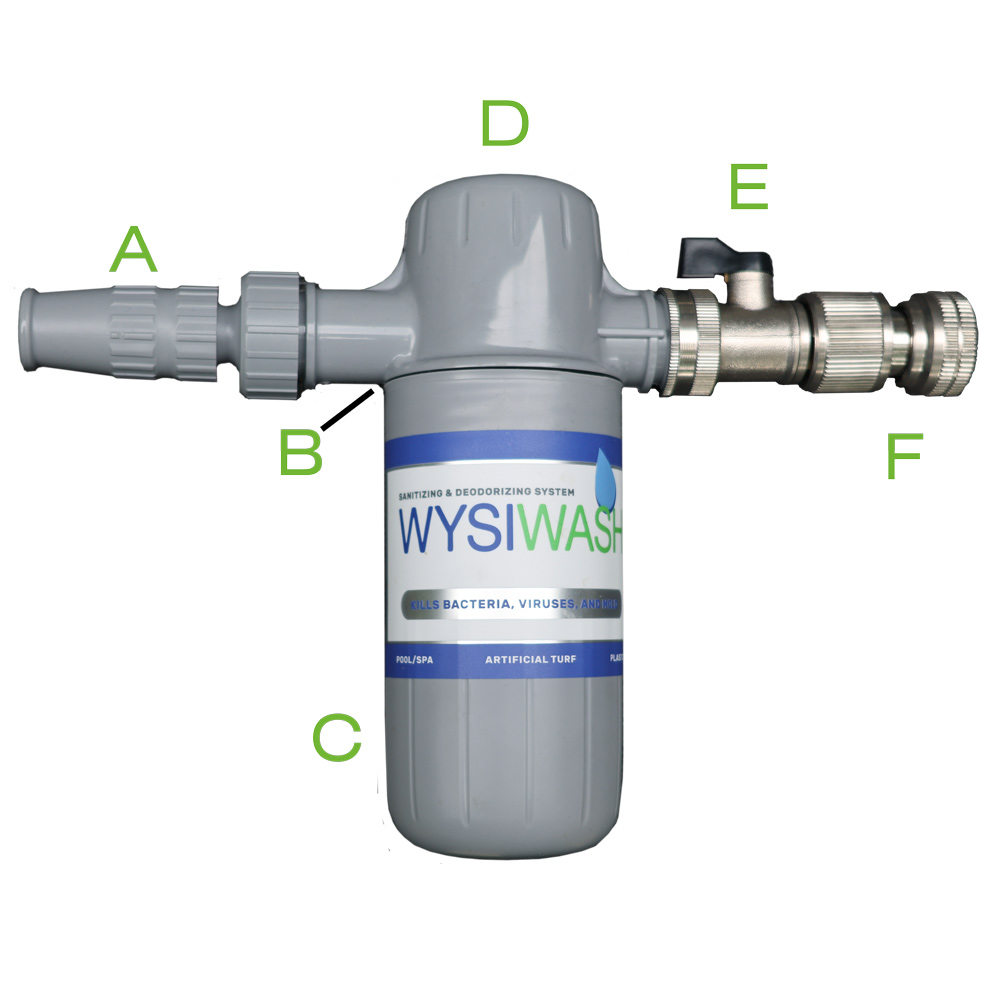
Part Descriptions
A. Adjustable Nozzle Changes the stream emitted from a gentle mist to a targeted stream
B. Hydro Seal Prevents leaking by securing the Caplet Container to the Hydro body
C. Caplet Container Holds the Wysiwash Jacketed Caplets
D. Hydro Body Regulates the amount of water that goes into the caplet container
E. Flow Control Valve Twist to turn off/on the Sanitizer-V
F. Female Quick-Connect Attaches to a standard garden hose to allow the Sanitizer-V to be attached quickly and easily
Sanitizer-V
The Sanitizer-V regulates the rate at which water passes through, allowing a consistent amount of chemical to be diluted. What does that mean for you? It means Wysiwash mixes the sanitizing solutions for you.
Wysiwash Jacketed Caplets
The Wysiwash Jacketed Caplets are condensed calcium hypochlorite - a proven disinfectant sanitizer. The caplets are biodegradable and eco-friendly.
How to Attach the Sanitizer-V to a Hose
Step 1: Unscrew the Caplet Container from the Hydro Body (top of the Sanitizer-V).
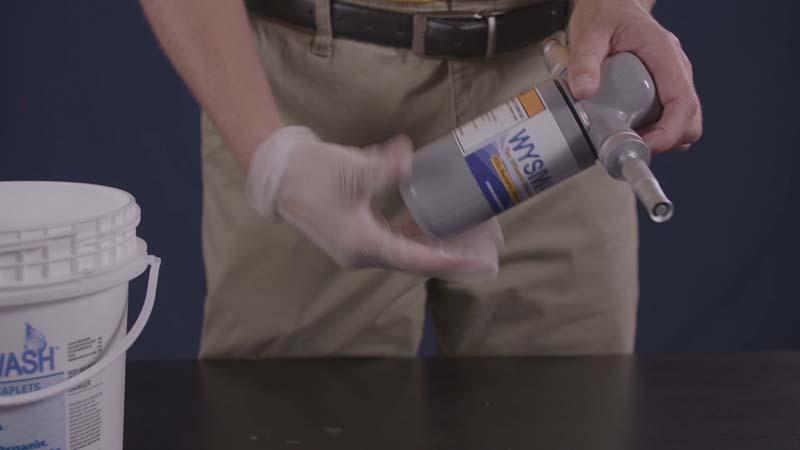
Step 2: Place caplet inside the Caplet Container. Do not remove the plastic jacket. If the plastic jacket has been removed or damaged, dispose of the caplet.
Note: We recommend you wear gloves when handling the Jacketed Caplets. While the Wysiwash solution does not irritate skin, in its solid, concentrated form it can irritate eyes and skin.
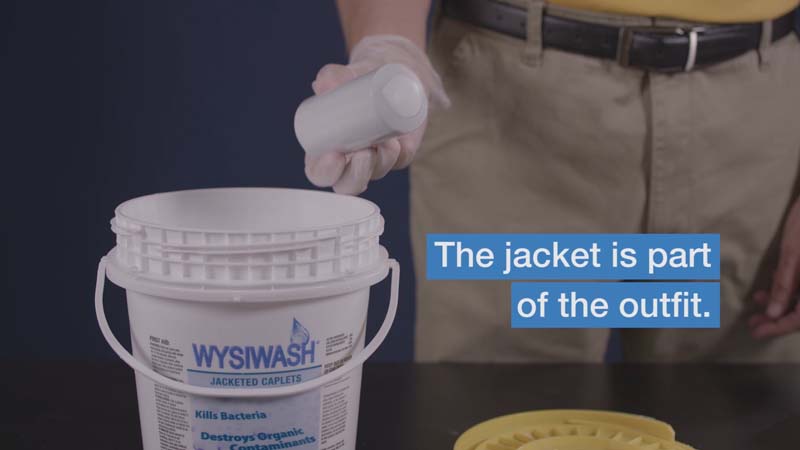
Step 3: Secure the Hydro Body (top piece) of the Sanitizer-V to the Caplet Container. Tighten until snug, but do not over-tighten.
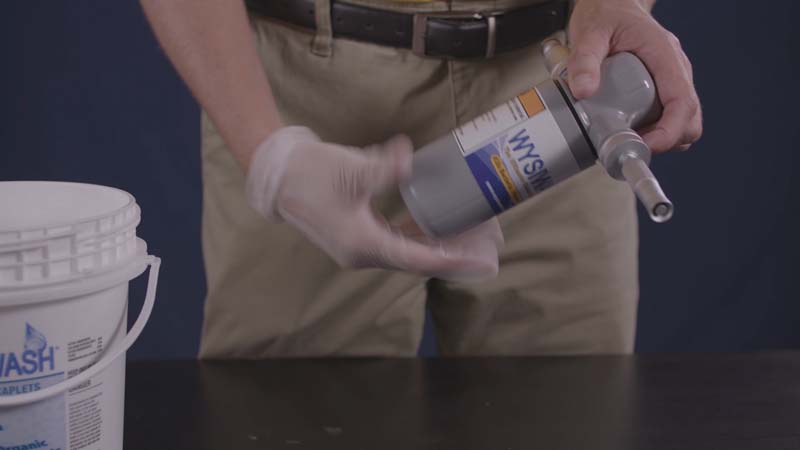
Step 4: Thread the Female Quick Connector onto your garden hose.
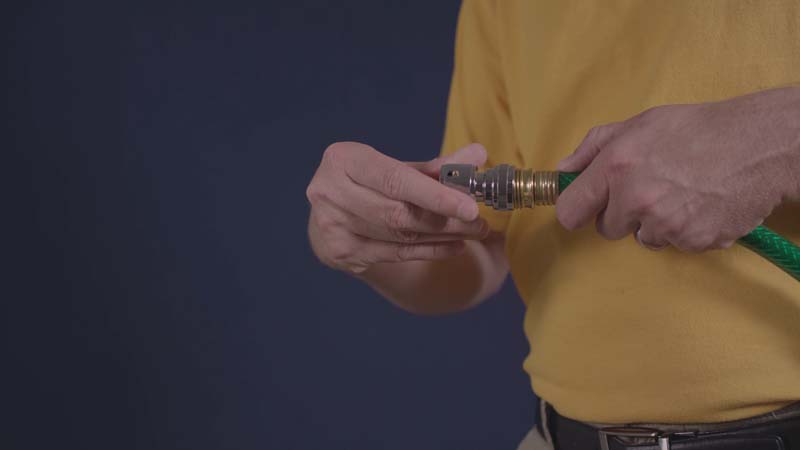
Step 5: There is a "neck" on the opposing end of the Female Quick Connector that will slide back toward the hose end. Pull the neck back and insert the Sanitizer-V (male end) into the Female Quick Connector. Then release the neck. After, press the two parts gently together to make sure the two parts are securely connected.
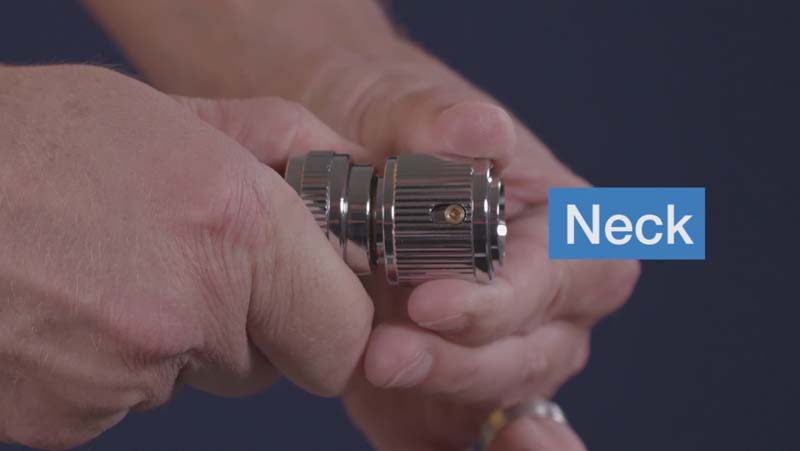
How to Use Wysiwash to Sanitize
Step 1: Turn on the hose.
Step 2: To turn on the unit, twist the valve on top of the nozzle. Begin with a gentle mist, not a targeted spray. Misting first prevents pathogens from becoming airborne.
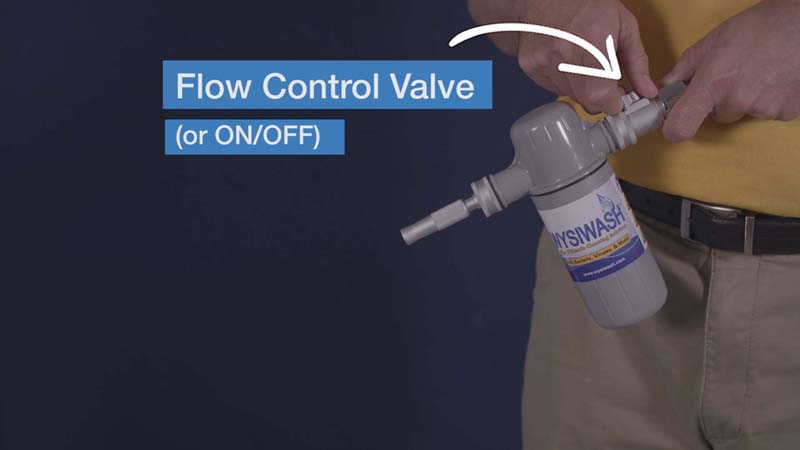
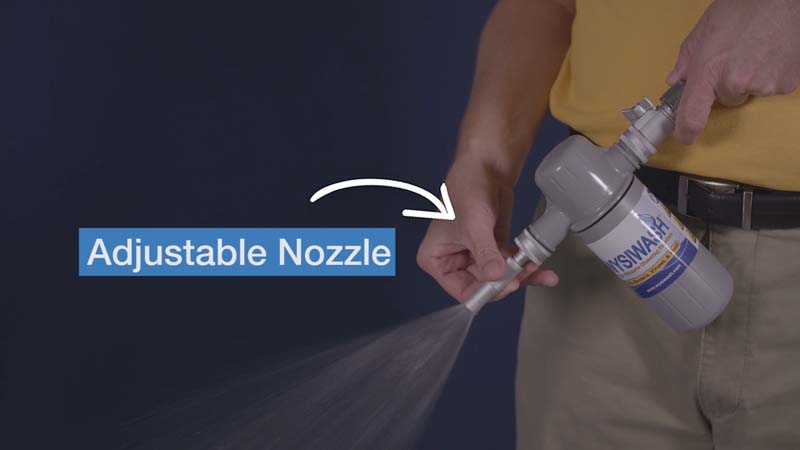
Step 3: PRIME: Spray into a drain or bucket to prime the system. This ensures that the solution is at an effective concentration.
New Caplet: Prime for 1 - 2 minutes.
Previously used caplet: Prime 30 - 40 seconds.
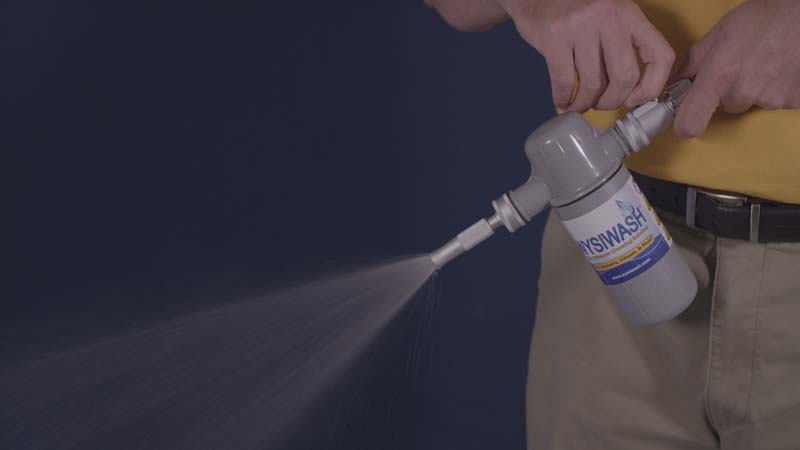
Step 4: After the whole area has been sprayed with a gentle mist, use the pressure sprayer on heavily soiled areas to remove any remaining organic waste. To adjust the spray, twist the sleeve on the stem of the nozzle to adjust the spray.
Step 5: Allow Wysiwash to set for 2 minutes.
Optional Rinsing: For uncoated metal or high gloss surfaces, we recommend rinsing. For most other surfaces, you do not need to rinse, but you can read more here [Blog Post: Do I Need to Rinse Wysiwash or Not?
Step 6: Either squeegee, or allow the area to completely air dry. Do not reintroduce animals or children into the area until there are no longer pools of Wysiwash solution.
How to Drain the Sanitizer-V
Draining is key to keeping your Wysiwash unit in good shape. Drain Wysiwash every time you use it and any time more than 15 minutes will go by without using it.
NOTE: Take caution to avoid contact with clothing while draining - the drained solution is more concentrated and may stain. Rinse the area where Wysiwash has been drained to avoid chemical spots.
Step 1: Make sure the Flow Control Valve is Off.
Step 2: Disconnect the Sanitizer-V from the Female Quick Connector by sliding the "neck" of the female toward the hose side again to release.
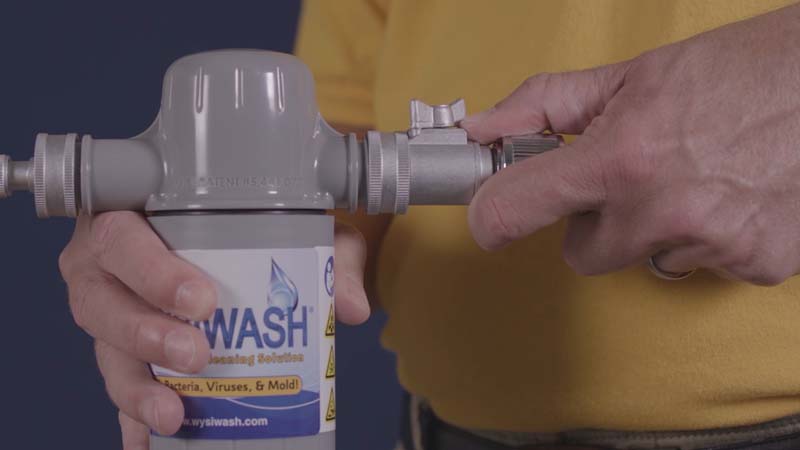
Step 3: In a bucket, drain, or sink, turn the Sanitizer-V upside down and point the valve downward.
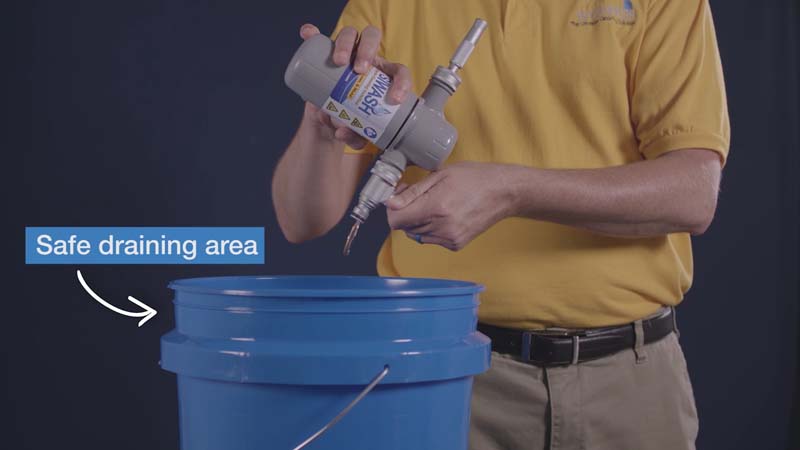
Step 4: Turn the Flow Control Valve on to allow the solution to drain. The bottom of the Caplet Container, should be pointed upwards at a slight angle. This allows water to drain from the bottom of the Caplet Container.
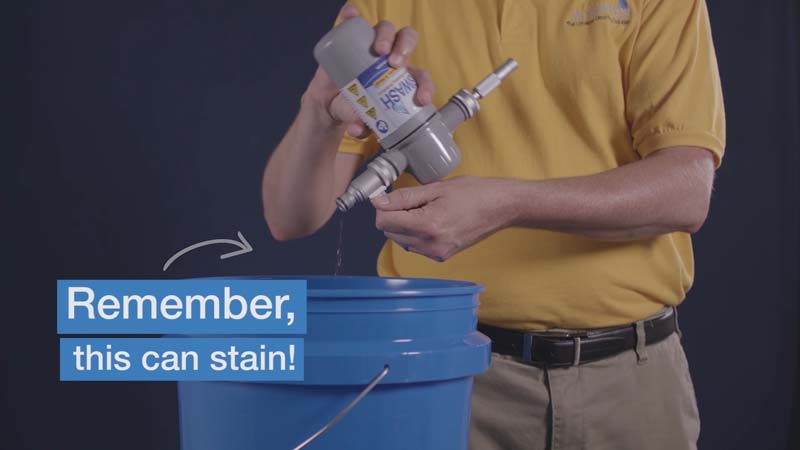
Step 5: Store the Sanitizer-V in this position to maximize the life of your caplets.
How to Store the Wysiwash Sanitizer-V & Jacketed Caplets
Leave the caplet inside the Sanitizer-V between uses. If you've left the jacket on the caplet and drained the Sanitizer-V properly, it should stay solid.
Store All Wysiwash Products in a Temperature Controlled Environment
Extreme changes in temperature can damage the caplets and Sanitizer. Do not store outside or in a shed or garage.
If the Sanitizer-V is stored in freezing temperatures, it can break. Especially if it has not been drained properly (think of how pipes can freeze).
Failure to drain and store products properly voids the warranty.
Ideally, store the Sanitizer-V upside down, with the male end pointing down at an angle. This allows it to continue draining and maximizes the life of the caplet. Put a plastic or glass tray or bowl under it to catch any additional drips.
Store Wysiwash Jacketed Caplets & the Sanitizer-V out of the reach of children and pets.
Troubleshooting Issues with Your Wysiwash Sanitizer-V
Build Up or “Corrosion”
If the Sanitizer-V has spots of calcium on it or seems clogged, give it a bath! Simply remove the caplet from the unit and store in a safe, plastic container to dry. Open the valve. Leave the caplet container disconnected from the rest of the Sanitizer-V, then soak the unit in white vinegar overnight (8 - 14 hours). To maximize the life of your unit, soak the unit monthly.
Sometimes people will call this "corrosion" but it's just built up calcium.
Calcium Deposits aka Hard Water Spots aka Residue
Calcium deposits can also build up on surfaces that you have sanitized. High gloss, painted, and textured surfaces will be more prone to show hard water spots. When the source water is hard/high in minerals, or the system has not been drained after use and primed properly it can also increase the chance of calcium spots.
Luckily, these are easy to remove or prevent by :
- Occasionally rinsing the surface with household vinegar to remove built up residue.
- Rinsing Wysiwash after adequate contact time on the surface.
- Squeegeeing after using Wysiwash.
Staining
At it's sanitizing concentration, Wysiwash does not stain. After speaking with many customers, even visiting and watching their protocols, we can confidently say that most stains can be avoided with proper protocols.
The most common cause of staining is skipping draining. Draining should be done every time you use Wysiwash. Be careful while disconnecting the Sanitizer-V from the hose and take caution to avoid the solution that drains out.
If staining occurs when Wysiwash is first started, find an area where splashing is unlikely to occur and prime Wysiwash for 60 seconds before continuing with normal sanitizing procedure.
Got more questions? Wysiwash is here for you.
Our customer support is awesome. Feel free to call us or email us at any point.


